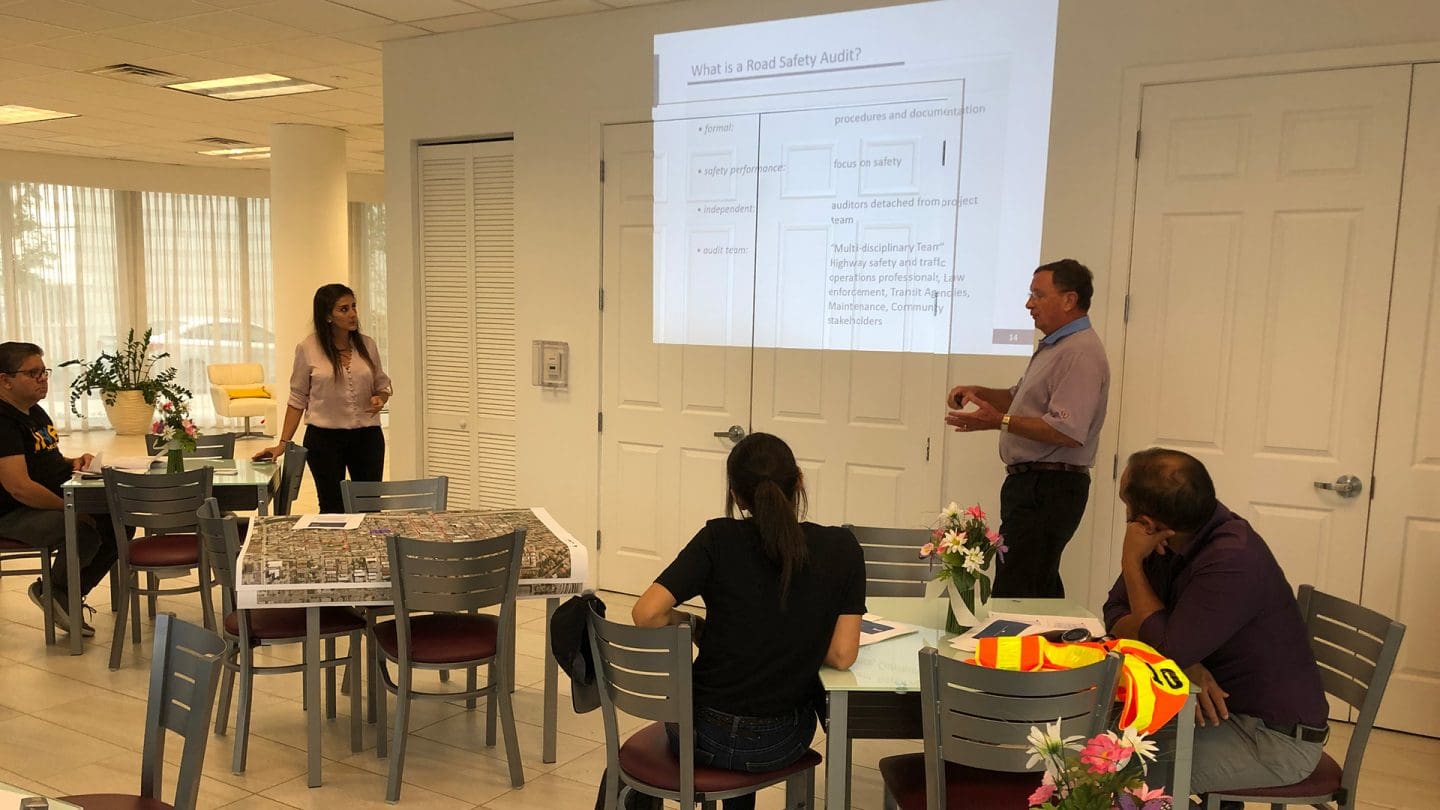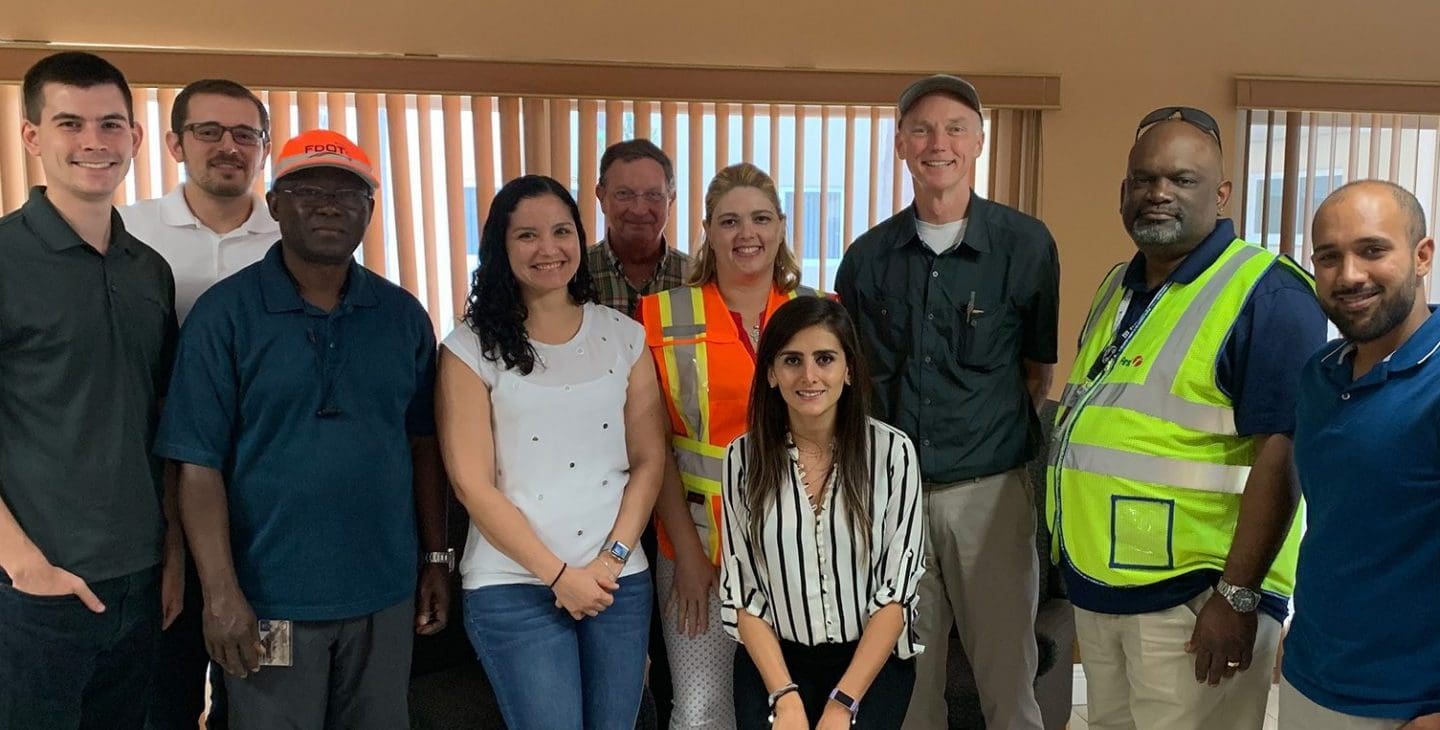August 18, 2020
The following article, authored by Benazir Portal of Kittelson & Associates and Kevin Walford of the Miami-Dade Transportation Planning Organization, was originally published in the Summer 2020 edition of the Florida Planning Magazine.
—
A 2017 study completed by the Miami-Dade Transportation Planning Organization (TPO) revealed that 11 percent of all crashes in the county between 2008-14 occurred within a quarter mile of older adult living centers. The goal of the Aging Road Users Strategic Safety Plan, was to improve the safety and mobility of older adults on the road “”¦by reducing their fatalities, serious injuries, and crashes, while maintaining their mobility and independence.”
 The older adult population (defined as 65 years or age and older) in Florida is increasing, and areas where there are high concentrations of older adult citizens need attention from transportation professionals. Many older adults are not capable of driving themselves and rely on walking, transit services or shared mobility to access, at a minimum, basic services. This is especially true in disadvantaged areas.
The older adult population (defined as 65 years or age and older) in Florida is increasing, and areas where there are high concentrations of older adult citizens need attention from transportation professionals. Many older adults are not capable of driving themselves and rely on walking, transit services or shared mobility to access, at a minimum, basic services. This is especially true in disadvantaged areas.
In 2019, the TPO implemented the recommendations set forth in the Aging Road Users Strategic Safety Plan. These recommendations included conducting Road Safety Audits (RSAs) at priority locations and identifying potential road safety issues and opportunities for safety improvements consistent with the procedures outlined in the Federal Highway Administration RSA guidelines. The TPO brought on Kittelson & Associates, Inc. (Kittelson) to assist with the development of the study and conduct an RSA at five assisted living facilities that were identified through a data-driven analysis as the top priority locations to address.
TPO and Kittelson (the study team) coordinated a multidisciplinary group including representatives from the Florida Department of Transportation (FDOT) District Six (traffic operations and design units), Miami-Dade County Department of Transportation and Public Works, City of Miami, City of Hialeah, staff for the various assisted living facilities, residents, and Live Healthy Little Havana, a project that the City of Miami put forward for the Little Havana neighborhood where two of the identified facilities were located.
Road Safety Audit Process & Recommendations
The study team gathered information through background research, data collection, field reviews, and meeting with residents and staff at the Assisted Living Facilities. Learning about residents’ daily experiences was key to uncovering safety concerns. For example, residents told the team about a specific unsignalized intersection that they frequently crossed out of convenience, but noted vehicles tend to drive through that intersection at high speeds, making it a safety hazard. All of this information was incorporated into the analysis, which recommended nearly 140 projects including, but not limited to, maintenance projects, signage improvements, pavement markings, and signalized crossing evaluations. Some solutions were identified that could be implemented quickly as part of a systemic safety approach, while others will require further analysis and allocated funding to advance. Once implemented, these projects will improve safety conditions for residents of the assisted living facilities, as well as other members of the community who share the roads and utilize area transit stops.

A community meeting at Joe Moretti II, one of the older adult facilities studied.

Left to right: Ryan Mansfield (Kittelson), Phillip Haas (Kittelson), Jacques Defrant (FDOT), Irene Soria (MDC DTPW), John Temple (Kittelson), Yanek Fernandez (MDC DTPW), Benazir Portal (Kittelson), David Henderson (TPO), Kevin Walford (TPO), Ryan Raghunandan (FDOT).
Three Takeaways for Transportation Planners
There are a few takeaways from our work that may benefit other agencies and planners:
1. The makeup of the team matters. An RSA requires a multidisciplinary approach, but the specific makeup of the team brought many benefits to the project. Specifically, representatives from FDOT District Six and the Miami-Dade County Department of Transportation and Public Works helped us address “low hanging fruit” improvements that could be implemented immediately, such as signal timing adjustments.

Kevin Walford with one of the residents at Vivian Villas in Hialeah.
2. Community engagement means listening for missing pieces of the story. Collaborating with the Live Healthy Little Havana team, who brought insight from previous conversations, public input and observations, combined with listening openly to residents’ daily experiences gave us key information that we would not have attained through field observations and data collection only.
3. For a solution to be truly context-sensitive, there must be a way for everyone to be heard. The identified assisted living facilities are located in disadvantaged areas and many residents were non-English speakers. Thankfully, Benazir is a Bolivian native and was able to lead many of the workshops in Spanish, but the team had to shift our approach to make it work. For community engagement to be inclusive, these considerations must be identified early on.
This project is a good example of prioritizing safety for older adults and populations in disadvantaged communities with limited automobile access and underscores the need for infrastructure that supports all modes of transportation. For additional information, the team project managers may be contacted below.
Benazir Portal is a senior engineer at Kittelson & Associates, Inc. She can be reached at bportal@kittelson.com. Kevin Walford is a transportation planner at the Miami-Dade TPO. He can be reached at kevin.walford@mdtpo.org.
